#babalawo
Text
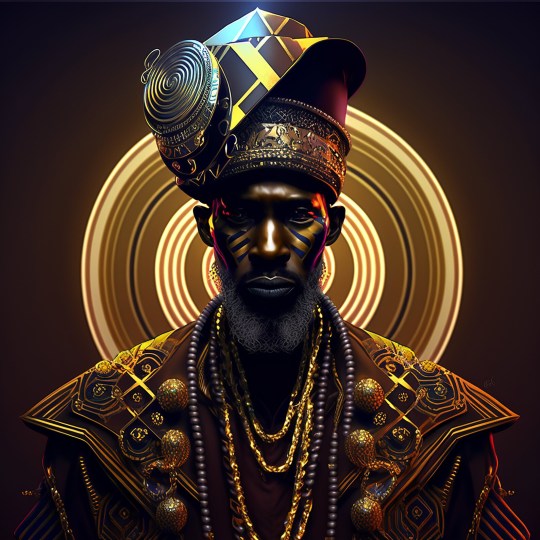
Babaaláwo or Babalawo in West Africa (Babalao in Caribbean and South American Spanish and Babalaô in Brazilian Portuguese) literally means "father of secrets" in the Yoruba language. It is a spiritual title that denotes a high priest of the Ifáoracle. Ifá is a divination system that represents the teachings of the ÒrìṣàỌrunmila, the Òrìṣà of Wisdom, who in turn serves as the oracular representative of Olodumare.

Functions in society
The Babalawos are believed to ascertain the future of their clients through communication with Ifá. This is done through the interpretation of either the patterns of the divining chain known as Opele, or the sacred palm nuts called Ikin, on the traditionally wooden divination tray called Opon Ifá.

In addition to this, some of them also perform divination services on behalf of the kings and paramount chiefs of the Yoruba people. These figures, holders of chieftaincy titles like Araba and Oluwo Ifa in their own right, are members of the recognised aristocracies of the various Yoruba traditional states.

People can visit Babalawos for spiritual consultations, which is known as Dafa. The religious system as a whole has been recognized by UNESCO as a “Masterpiece of the Oral and Intangible Heritage of Humanity."
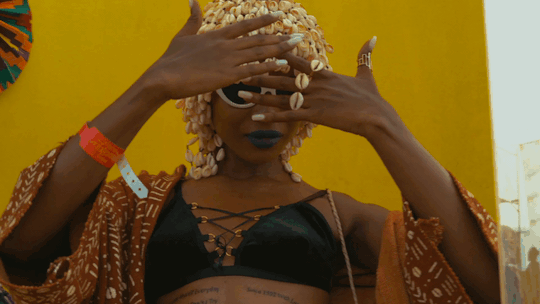
#unesco#babalawo#dafa#yoruba#african#afrakan#africans#brownskin#afrakans#kemetic dreams#brown skin#african culture#afrakan spirituality#nigerian#ancestors#peace#metaphysics#araba#opele#ifa#ouwa#olodumare#orisa#orunmilla#orun#traditional african religion#west africa#yoruba language#father of wisdom#orisa of wisdom
107 notes
·
View notes
Text
WHAT IS A BABALAWO IN THE IFA TRADITION?
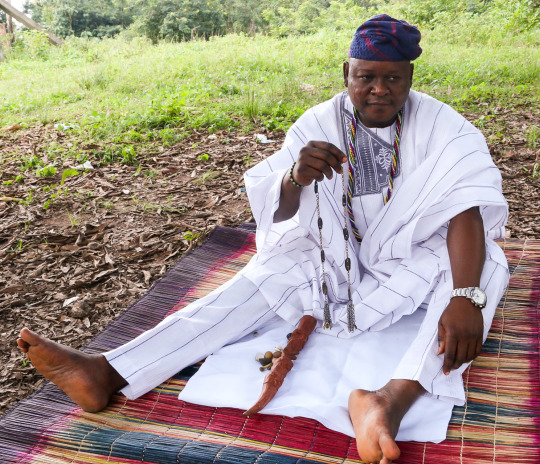
A Babalawo is a male priest in the Ifa tradition. His female counterpart is referred to as an Iyanifa. This individual provides expert advice and service in the Yoruba tradition as he must be highly knowledgeable in its rituals, lore, and history. Someone operating in this role provides spiritual advice and wise counsel to those seeking insight.
The term “Babalawo” can be translated to mean “father of the knowledge of things material and spiritual.” It likewise translates to “father of mysteries” or “father of secrets.” This is because Ifa priests are well-schooled in the knowledge of the Ifa Oracle. As such, they can provide resolute guidance to assist people in their daily affairs.
People consult these individuals when they need assistance with personal health issues, business growth, and fertility and marriage-related concerns. They can help with many life issues, such as illness, financial struggles, and loneliness, and even assist in helping others understand their destinies.
THE ROLE OF A BABALAWO
It is believed that everyone has a destiny written for them before they are born, predetermined in Orun (Heaven). The Babalawo’s role is to provide spiritual guidance and help individuals come to terms with their fate. And he assists them with alleviating challenges along the way.
This individual is considered a bridge between the Divine and humans. These priests provide divination and other services that require high-level communication with the spiritual realm. As such, they must master the Cabalistic or esoteric aspects of the tradition. Doing so grants them access to advanced knowledge and skills in making medicines.
These medicines can cure and prevent physical, mental, emotional, and spiritual disease states. Some of these remedies can be explained through Western medicine. But many of them contain spiritual aspects that are beyond the comprehension of modern-day science. By invoking and evoking spiritual forces, a Babalawo can manifest specific phenomena. He thus liberates individuals from the evils of both material and spiritual realms, known as Ajogun.
WHAT DO BABALAWOS DO?
Ultimately, Babalawos are responsible for initiating divination, interpreting the results, and providing guidance based on their findings. As such, their role does not stop with divination. Instead, they are also educators, mentors, and consultants as they guide people in the customs, beliefs, and wisdom of their ancestors and the Orisas. They are likewise medicine men who serve one of the most important roles in traditional Yoruba society.
DIVINATION
Babalawos are primarily responsible for consulting the Ifá oracle. They have vast knowledge about the 256 odus that form part of the Ifá corpus. This sacred script provides valuable insight into various matters concerning all aspects of life. It speaks to the many situations and challenges that we are all subject to encounter in this lifetime.
In traditional practice, the Holy Odu is the guiding force in a divination session. Ifa adherents are expected to follow whatever guidance is given to them through the Ifa oracle. This may include practical advice on what to do or not to do in certain instances. And it will always include an ebo or a sacrifice to one or more Orisa and ancestral or other spirits.

HERBALISM AND MEDICINE
Though many in the western world focus on the divination aspects of Ifa, herbalism is an integral part of an Ifa priest’s role. This individual prepares medicines prescribed during divination sessions or to be used in religious ceremonies. This is known as Akose or spiritual medicine in the Ifa tradition.
Akose involves the use of herbs, leaves, roots, and sometimes animal parts to produce medicines. Despite the importance of ebo, many people won’t experience relief from their issues without taking these spiritual medicines. These medicines can be in the form of soap, powder, cream, etc. And contrary to modern medicine, Akose can cure practically any illness as well as non-health-related issues such as:
Spiritual attacks
Witchcraft
Barrenness
Marital problems
Safety issues
Legal problems
Financial stress
DESTINY ALIGNMENT
Babalawos are trusted messengers of Orunmila as they work towards helping their clients achieve their highest potential and ultimate destiny. An Ifa priest is a highly-esteemed leader who has a deep understanding of both material and spiritual matters. He embraces and respects all other traditions and religions. As such, he can guide others on how to fulfill their soul mission.
LIVING A BALANCED LIFE
Aside from helping others, a Babalawo must also adhere to the principles of Ifa to be an effective practitioner. Such an individual must show reverence for Ifa guidelines and walk in the way of the tradition. And this individual must meticulously observe the guidelines of Ifa to effectively lead and help others. Above all, a Babalawo must live a life of integrity, honesty, and balance. He must live in harmony with man, nature, and the spiritual world.
REQUIREMENTS FOR BECOMING A BABALAWO
Becoming a Babalawo is not an easy or quick process. Before formally entering the priesthood, a candidate must spend many years learning under the tutelage of an experienced Oluwo or Babalawo. In traditional practice, this process typically begins at birth for those ordained in this profession.
However, becoming a Babalawo typically requires four or more years of rigorous research, practice, and study for individuals who were not born in the tradition. One must spend countless hours under the tutelage of a knowledgeable mentor to become an adept Babalawo.
Becoming a Babalawo also requires initiation into Ifa and further study with experienced elders. The first step of the process includes receiving the Hand of Ifa. Thereafter, the person will visit Igboodu – the sacred Grove of Ifa. This is a place where the formal initiation into Ifa takes place. During this period, the priest-in-training receives the gifts and power that allow them to perform divination and effectively guide others.
If you seek guidance from a skilled Babalawo, learn more about our Ifa divination services.
#ifa religion#ifa tradition#babalawo#african spirituality#african traditional religions#traditional african religions#african spirit#orisa#orishas
2 notes
·
View notes
Photo

🔰 𝑪𝒐𝒏𝒔𝒖𝒍𝒕𝒂 𝒄𝒐𝒏 𝑰𝒇á 🔰 •ᴾʳᵉˢᵉⁿᶜⁱᵃˡ 💚WhatsApp: https://wa.me/message/L3DAIMMLACIRP1 👉🏻💌 𝐌𝐃 ⏳10:00 AM a 4:00 PM 🔔 𝐋𝐮𝐧𝐞𝐬 𝐚 𝑺𝐚́𝐛𝐚𝐝𝐨 𝐌𝐞́𝘅𝐢𝐜𝐨, 𝐏𝐮𝐞𝐛𝐥𝐚📍 #ifa #orula #orunmila #oraculodeifa #culturayoruba #religionyoruba #sacerdotedeifa #babalawo #babalocha #orishas #espiritualidad #sabiduria #ancestros #autoayuda #amoruniversal #conciencia #cienciacuantica https://www.instagram.com/p/CoahrwoJDo5/?igshid=NGJjMDIxMWI=
#ifa#orula#orunmila#oraculodeifa#culturayoruba#religionyoruba#sacerdotedeifa#babalawo#babalocha#orishas#espiritualidad#sabiduria#ancestros#autoayuda#amoruniversal#conciencia#cienciacuantica
3 notes
·
View notes
Text
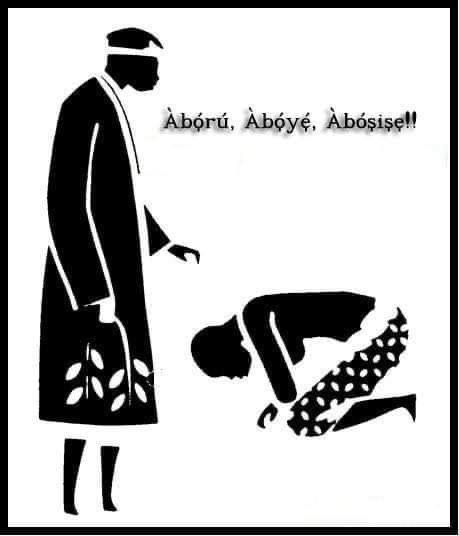
Olhando para o Odù, Èjìogbè lançado para o Ọ̀sẹ̀ Ifá de hoje, domingo, Ọjọ́ Àìkú/Dia da imortalidade, o que mais podemos pedir senão a preservação da nossa alma?
Láìsí ẹ̀mí kò sénìyàn
Ènìyànòfo lásán ni
Sem a alma não há seres humanos
Os corpos humanos são apenas figuras comuns
Ouça o verso do Odù
Àfín ló fi gbogbo ara hewú
Arọ ni ò na'wọ́ kó gbé gbá Òòṣà l'ájà
Adífá fun Ẹ̀mí tí ńṣọmọ Olódùmarè
Òrìṣà, t'Ẹ̀mí ló ṣòro
Tí Ẹ̀mí ò bá bọ́ iré kù lẹ́hìn
Òrìṣà, tíẸ̀mí ló ṣòro
Kí a má tètè kú da ire ọlà yí nù
Albino é aquele que tem cabelos grisalhos por todo o corpo
Um aleijado não pode simplesmente esticar as mãos para carregar a cabaça de Òòṣà do telhado
Elenco de adivinhação para a Alma, a criação de Olódùmarè
Salve Òrìṣà, a alma importa
Se a Alma não estiver perdida, o bem está garantido
Salve Òrìṣà, a alma importa
Oramos para que não morramos jovens, para não perdermos nossa riqueza arduamente conquistada.
Fique abençoado
De Araba de Oworonsoki terra Lagos
0 notes
Photo

WHO IS MY ORISHA? Why not Find Out Who Your Orisha Is? When we come to this world everyone of us are accompanied by an Orisha💯 That Orishas helps us alot to make our lives better, And is one of our first lines of protection in life. We share many of the traits of our Orisha, and many of the things which are suitable for our Orisha are also most suitable for us. And by knowing who our Orisha is, we also learn to know ourselves better. Knowing who is the "owner of our head" also helps us to lead more effective lives,And the more we live in harmony with our Orisha, the more harmonious our lives will be. For example when a person finds out they are a child of Obatalá they know they usually function best over time and that when they are hurried they are at their least efficient. They need time alone and require peace and quiet. Children of Obatalá need to take very good care of their heads and should refrain from drinking heavily or taking drugs. When you know who your Orisha is, you also know who to approach when you need help in life. Therefore the identity of our Orisha is extremely important for us in the religion. Alaafia 🙏📿 For more information you can message me here or chat me up on WhatsApp +2348107863886 #mexico #spiritualgangster #atlanta #georgia #spain #ochosi #ifa #babalawo #godfather #21savage #herbalism #Agentina #gangsterrap #spirituality #ase #asé #axé #axe #oshun🌻 #eleggua❤ #eleggua👑 #agentina @_franse1 @awo_ochosi @baba.ochosi_thehunter @brilliantly_divine.llc @iyanifa_o5unkemi @yeyesbotanica_atlanta @21lilharold @21savage https://www.instagram.com/p/ClpYFjnIFfg/?igshid=NGJjMDIxMWI=
#mexico#spiritualgangster#atlanta#georgia#spain#ochosi#ifa#babalawo#godfather#21savage#herbalism#agentina#gangsterrap#spirituality#ase#asé#axé#axe#oshun🌻#eleggua❤#eleggua👑
0 notes
Text
You can dm me to know more about your life and destiny through ifa consultation ready with the use of ikin ifa (ifa palm kernel) or opele (ifa spiritual chain) on my WhatsApp number @ +2348027839128 ifa is the way of life📿 ase🙏

1 note
·
View note
Text
SÁBADO 16 DE SEPTIEMBRE 2023
Debido a que el Campo Finda de la ciudad de Coro Edo Falcón se encuentra en muy mal estado y con vigilantes. Los 8 rayamientos pautados para ser realizados allá; se llevarán a cabo en Punto Fijo . Las CONSULTAS se haran via WhatsApp a las 10:00 am

◇ Pueden ubicarme en mis redes sociales o llámarme a mis números WhatsApp +584126497602
+584246588955
Mi canal YouTube: https://youtube.com/channel/UCILfzPpZe3Ps9yFK1nlYtug
•Facebook: https://www.facebook.com/profile.php?id=100011790192087
•Instagram: elegua2012
Twitter: EliasCarvajal66
•Tumblr: Tata7rayos
Y también pueden localizarme en mis páginas asociadas a mi Facebook. https://www.facebook.com/elias.carvajal.180625?mibextid=ZbWKwL
▪︎ Tata7rayos.
▪︎ Pactos Trabajos Ahitianos Voodoo y más.
▪︎Awo Ile Ifa Ola.
▪︎ Centro Espíritual Grupo Carvajal y Asociados SA.
#✓Hermanos Carvajal#babalawos; paleros#santeros#espiritistas a tus servicios#Garantizamos resultados donde todos han fallado.
2 notes
·
View notes
Text
Caribbean Folk Saints and Mighty Dead: A Precursor
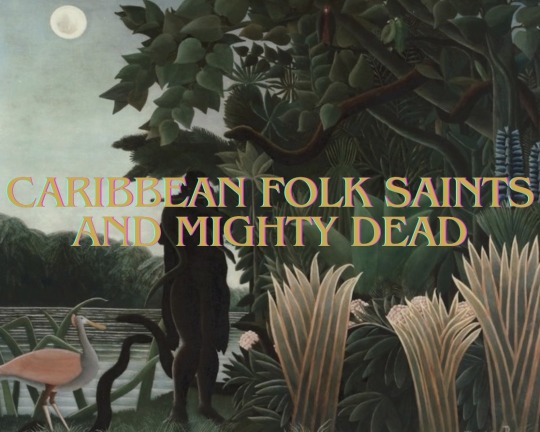
We all have family members who take on an almost Mythic quality after they pass on. They may have been a character in life, or a perhaps a spiritual practitioner. Maybe they were known for their generosity, or lack of it, or their strength or brilliance. Nonetheless, it is someone who, even in death, still makes an impact. In personal practices, we may work with these ancestors for guidance and healing, but what happens when their influence spreads past your family, into the local community or even entire country? This and many other strange circumstances often explain the origin and powers of Folk Saints and Elevated Dead. I will be going into the various Folk Saints and Deified Ancestors of the Caribbean, (including Florida), but before I can do that I need to explain where these spirits come from, and why they are so potent in our everyday lives.
What are Folk Saints and Mighty Dead?
Folk Saints and Mighty Dead are spirits of dead people who were either elevated in life, or became elevated after death. Their elevation often is then connected to their ability to grant various petitions made to them. Some of the Folk Saints I will be talking about were used to disguise other figures who were outlawed by the Colonial government at the time, while others are various figures of marginalized communities who gained sorcerous or otherworldly reputations after death.
Cuba and Florida are Lands of diaspora and syncretism. Many different traditions abound and each tradition has multiple lineages, so the classification of spirits differs depending on the worldview of the person explaining. Some practitioners work within a framework of Catholicism, some use elements and some flat-out reject Catholicism completely for decolonization purposes. For this reason, I have differentiated Folk Saints from the Mighty Dead.
Folk Saints will include those spirits who are worked with in a Catholic context, but are usually not canonized or not at first. On the other hand, the Mighty Dead will include spirits who are venerated amongst Indigenous and African traditions in Cuba as well as the surrounding areas, as to not group them under a title created by Colonizers. If you are Cuban or Caribbean, these Folk Saints and Mighty Dead offer power at a closer degree because they are more proximal to your Spirit Court, and may even already have bonds with them.
It is important to note, spirits like Orisha and Cemí have very specific protocols, manners and taboos when approaching them, so this is best done with the help of a priest, such as Oloricha or Babalawo, or a Taíno Behike. These are not energies you simply feel drawn to and work with. Orisha and Cemi are in some cases Deified Ancestors and others Personified Forces of Nature, among other things. This varies from the Ancestors and Spirits I will be discussing in this series.

Benefits of Working with The Mighty Dead
Folk Saints and Ancestors give us a closer connection to the divine through their proximity to the Divine and their individual virtues and personalities. As with all spirit relationships, you will get out what you put in.
Folk Saints who are related to the Land you live on, such as Uncle Monday or Bessie Graham for us Floridians, can help to deepen your connection with the local community. They can help you to further your relationship with the Earth and introduce you to other Land spirits.
Spirits related to your Ancestry can help to work through generational issues. Some ancestral spirits, like José Martí or Guamá for us Cubans, are related to ideas of War, Rebellion, and overcoming oppression. These spirits can be worked with for the same pursuits of defeating oppressors in the modern day. Each spirit has a story and is multi-faceted, so it really depends on what your connection is to the Spirit and what you are capable of offering them.
How to Work with Deified Dead
Working with these spirits is individual to each spirit, based on what their heritage is, as well as their personal tastes. When starting out, it’s best to keep things simple. Instead of going and creating an entire altar dedicated to a spirit, begin by praying about it at your Bóveda or ancestral altar. Here, you may find that a spirit is not compatible with your current situation, or doesn’t want to work with you ever! Should the omens be good, however, and you may begin establishing a connection to that spirit Research and talking to other devotees can give you great insight into what a relationship with that Spirit can look like.
My formula for reaching out to these spirits is always different, but I follow basic principles. I always begin with a representation of the spirit, a small offering and a candle. The representation can be anything, from a statue to a printed picture or even just their name on some paper. The offering is in most cases water until the spirit makes other wants known to me, but when a spirit doesn’t take water I offer food or tobacco instead. The candle is something I was taught helps to enhance spirit communication, carrying messages between the worlds. It is helpful to research about whoever you are attempting to communicate with, and if possible you should speak to other practitioners who work with the same Spirit. Often times, this is someone-you-know’s father or grandmother. From here, you should sit with whatever entity you are contacting, allowing yourself to experience a personal relationship with them. I will share individual experiences of what each spirit has been like in practice for me, or people I know, but for beginning this is a good basic way to start out.
I look forward to sharing more about these incredible figures who influence my favorite corner of the world to this day.
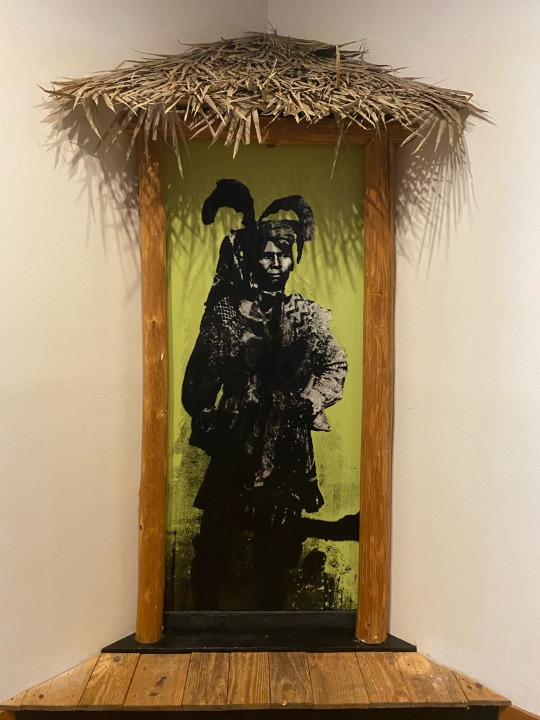
Paz y Progreso 🕯️
#witchcraft#florida#bioregional animism#bruja#brujeria#florida witch#santeria#swamp witch#witch#traditional witchcraft#cubanfolkmagic#cuban#cuba#taino spirituality#taino#folk magic#folk witch#espiritismo#atr#folkloric witch#animism
51 notes
·
View notes
Text
Who is the bruja?
About Brujería and Curanderismo in Latin America, and witchcraft from a latine perspective.
You’ll most likely see the term Bruja used in anglophone communities to refer to latine magic practitioners. By that definition, any latin american person who does some kind of magic is, in a way, a bruja/brujo/bruje. This use of the word comes from a place of reclamation of said latine heritage and of our cultural folk magic practices, particularly for hispanic latines. Similarly, you’ll see portuguese-speaking latines using the word bruxa, or bruxaria.
I can hear you already: But I am a spanish-speaking european! I am also a bruja!... given the context, you’re a witch, not a bruja. Brujería in the broader sense of the word, as is used in any conversation in spanish, can be translated to witchcraft. “Brujería” in the specific “latine magic practitioner” sense doesn’t have an english translation, and thus we keep the word in spanish, to signify that cultural tie to hispanic latin america. So no, in the context of an anglophone discussion of brujería, you’re not a bruja, in the same way that, while speaking a languange derived from latin, europeans are not latino/latine because they’re not from latin america.
That is, considering the modern use of the word, specially in online spaces. But if you speak to your Elders, you’ll hear something a little different...
People like to ask themselves “am I a born witch?”, and well, traditionally, a bruja is made, not born, and it specifically implies baneful work.
Old school folks will tell you that not just anyone who practices magic is a bruja, in fact, calling a Faith Healer a “Bruja”, could be taken as a major offense.
Many elders will make a distinction between dual roles of what we’ll call the Healer, and the Witch, for convenience’s sakes, since the words for naming either vary in each languange and culture. One of the better known examples I can give you is how in spanish, and across latin america, you’ll hear the duality between the Curandera and the Bruja.
The Curandera Heals, the Bruja Bewitches.
While the Healer is born, with a set of gifts or dones that are necessary to fulfill a role assigned at birth (or even before so), to serve their community. A Witch is made, by their own choice, in a personal quest for power and knowledge, and thus doesn’t act in favor of their community necessarily, instead, acts seeking their own benefit first, sometimes... in detriment of the community.
There’s nothing wrong with keeping our best interests in mind! In fact, a true Healer is taught to balance left hand and right hand work, one who cannot harm cannot heal, and I always say we must understand the wound and how it was made before we can understand it’s cures, but precisely because of that, the figure of the Witch stands out more. A Healer can do both, heal and harm. While the Witch... not necessarily. A Witch is, oftentimes, only capable to manipulate circumstances (and people) but not heal, and even when good intentioned, it can bring negative repercussions. That is why it has such a negative connotation traditionally, and why most of the older folks, or anyone trained by them, will likely avoid the term.
Note how I’ve been saying Healer or Gifted person instead of Curandera. Because having a don does not by itself make someone a curandera. Since I’ve seen more and more people using the term online, here’s a reminder that being a curandera is not a choice and does not refer to just anyone who practices herbal healing or any other healing modalities, it is a responsibility to the community you’re in. Nobody is born a priest or babalawo, and similarly nobody is born a curandera, while they could be gifted from birth, each curanderismo lineage will have their own initiations and traditions to train that person and turn them into a true curandero, and only then, the community will give the title to them, after working for years and earning their respect and love. The term curandera is only appropriate for someone who not only has a higher calling (vetted & confirmed by elders), but specifically someone who’s been properly trained and is already in service of their community.
With that in mind, bruja is definitely the right term for someone who’s just learning and is only doing magic for themselves or close friends and family.
But then... there’s some issue specifically with indigenous and afrolatine practices and descendants. During colonization, the church demonized our beliefs, called our Ancestral practices, Gods and Spirits “satan worship” and thus, our healers were called “brujas”. Hunted and killed specifically because indigenous culture & healing, aswell as african traditional practices, were targeted. That is, we were called “brujas” as part of a cultural genocide. Elders will often stay away from the term bruja not just because it doesn’t reflect their practice, but also because staying away from the words bruja and brujería was, and in some places stil is, simply a survival instinct. Choosing other words to identify, or even not speaking about it at all, along with the syncretism with christianity, were ways to survive that genocide, and pass on as much as possible in whispers and under catholic veils.
It is up to each practitioner to talk to their elders, learn their people’s history, and decide for themselves if they wish to reclaim the word, or if they’ll rather use more culturally-specific terms, or maybe both. I’ve known plenty of healers of many paths who’ll refer to themselves as brujas to outsiders, and will use more specific terms amongst kin (myself included).
While I respect (and support) the reappropriation of the terms bruja and brujería to refer to latine magic, I also believe it is important to know our history with these terms, and out of respect for our ancestors and the old traditions, also learn the proper names of things. Bruja may be a good way to identify for someone who’s just starting out in magic out of their own choice, who’s seeking community and doesn’t quite know their place in the bigger scheme of things, but also someone who, guided by proper elders and community, must dig deeper, and find their home. There’s specific names, even just in spanish, for different kinds of healers and workers. Are you an oracionista? huesera? yerbera? have you been trained in these practices? Only a skilled elder can identify if you possess any gifts, and teach you how to hone your own skills. And If you’re indigenous, you must take the time to reconnect to your indigenous community, to your own medicine, and learn the proper terms in your indigenous tongue.
My final thoughts: reclaiming brujería is important, but so is learning and respecting our culture & history. We have incredibly rich cultures, and reducing ourselves to just “brujas” is certainly an oversimplification, if not even an attempt from outsiders and appropriators to overgeneralize and commodify our cultural practices that we must fight against. We can appreciate brujería as an umbrella term for everything that unites us, and as a term to make understanding and communication between ourselves easier, while also acknowledging the history of the word, the huge diversity it covers nowadays and giving due respect to each of our corresponding cultures.
Thanks for reading!
#brujería#bruja#brujas of tumblr#witches of color#brujeria#santeria#santería#curanderismo#curandera#traditional witch#traditional witchcraft#folk magic#folk witch#folk witchcraft
319 notes
·
View notes
Text
#recently read November 23
The Golem of Brooklyn by Adam Mansbach. A stoned art teacher accidentally creates a golem who decides his mission is to stop an upcoming alt right rally.
The Last Unicorn by Peter S. Beagle. Finally got around to this. A unicorn seeks the rest of her people and is forever changed by the mortal world.
How Can I Help You? by Laura Sims. A failed novelist working at a public library realizes her coworker was a killer nurse - and becomes fascinated with her as a topic for a new novel.
Last to Leave the Room by Caitlin Starling. While investigating why her city has started sinking, scientist Tamsin finds a new door in her basement - and then her doppelganger walks through it.
A Haunting in Hialeah Gardens by Raul Palma. Buried in debt, nonbeliever Hugo works as a babalawo. Then he's given a chance to clear his debts if he can end the very real haunting of his debt collector.
Before the Streetlights Come On: Black America's Urgent Call for Climate Solutions by Heather McTeer Toney. An environmental justice book discussing the climate crisis' disparate racial impacts.
The Centre by Ayesha Manazir Siddiqi. Anisa is referred to a secretive language-learning program with miraculous results... and a sinister secret raising questions of translation, appropriation, and power.
The Best American Science Fiction and Fantasy 2023 ed. by R.F. Kuang.
30 notes
·
View notes
Text
ORUNMILA - THE DIVINER of IFA
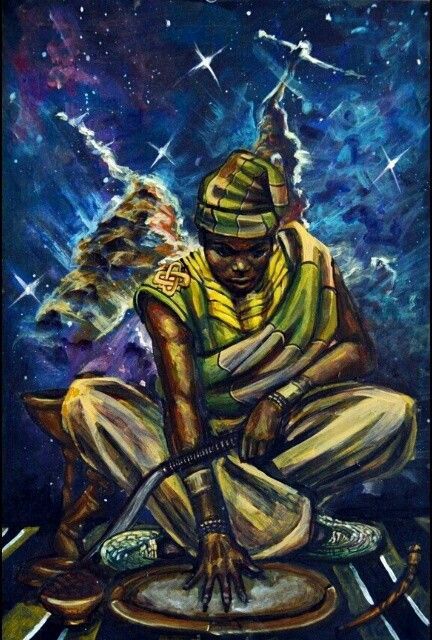
Orunmila represents Ifa (the wisdom of God) living in you; sometimes called the oracle of the heart. You do not converse with Orunmila thru a third party (whether a babalawo or device) but through meditation.
#ORUNMILA - THE DIVINER#https://x.com/ancientkemite/status/1701424937892794473?s=20#Yoruba Gods#Orunmila#the diviner#divination#IFA
39 notes
·
View notes
Text

VODUN DAN (instruções para o xire)
Qualidades do Orixá Oxumarê
Setembro 7, 2008 por Manuela
Oxumaré é o Orixá do arco-íris e da transformação. É o Orixá das adivinhações, grande feiticeiro, babalawo e curador. Tem dupla representação, hora como arco-íris, hora como o homem serpente. Traz nas mãos duas cobras de metal amarelado ou branco, representa o lado masculino e feminino, dependendo do caminho. A sua saudação: A Run Boboi!!!, quer dizer: Vamos cultuar o intermediário que é elástico.
Qualidades nagô/vodun
Dan – Vodun conhecido e cultuado no ketu com o nome de Oxumare, é a cobra que participou da criação. É uma qualidade benéfica, ligada à chuva, à fertilidade e à abundância; gosta de ovos e de azeite de dendê. Como tipo humano, é generoso e até perdulário.
Vodun Dangbé – É um Oxumaré mais velho que seria o pai de Dan; governa os movimentos dos astros. Menos agitado que Dan, possui uma grande intuição e pode ser um adivinho esperto.
Vodun Becém – Dono do terreiro do Bogun, veste-se de branco e leva uma espada. Becém é um nobre e generoso guerreiro, um tipo ambicioso, combativo de Oxumaré, menos superficial que Dan. Aido Wedo, também é uma qualidade de Oxumaré conhecida no Bogun.
Vodun Azaunodor – É o príncipe de branco que reside no Baobá, relacionado com os antepassados; come frutas e “leva tudo de dois”.
Vodun Frekuen – É o lado feminino de Oxumaré, representado pela Serpente mais venenosa. O lado masculino de Oxumaré é geralmente representado pelo Arco-Íris.
Vodun Danbale ou Dambala - O reflexo do arco íris no mar calmo ou na lagoa, No vodu, Damballa é um dos mais importantes de todos os loa. Ele é tanto membro da família Rada como uma raiz, ou racine Loa. É representado como um serpente e associa-se estreitamente com cobras. Ele é considerado o pai de todos os loa e, juntamente com sua esposa/companheira Ayida Weddo, considerado no Vodou haitiano o Loa de criação.
Algumas de suas canções rituais indicam que ele "transporta os antepassados", na sua volta ao Ginen (casa espiritual do Loa, e o pós-vida). Sua esposa é a serpente arco-íris Ayida Weddo (ele também é casado com a Erzulie Freda). Como um loa da nação Rada está associado com a cor branca. Sua cor especial é o branco. Suas oferendas são muito simples e que ele prefere um ovo em um monte de farinha. Algumas casas também servem-lhe com anisete (licor de anis) e xarope de milho. Ele não fala quando se apresenta em sua posse, mas faz barulhos, sibilam como uma cobra.
Na maioria das casas, ele é sincretizado com uma das imagens cristãs de Moisés ou São Patrício.
Nomes alternativos: Damballa Weddo (filho de Odan Wedo), Danbala, Zombi, Danbala Wedo, Damballah Weddo, Danbhala Weddo.
O Orixá Oxumare possui ainda vários outros nomes na África como no Brasil, que como acontece com todos os outros Orixás, se referem a cidades, lendas ou cultos específicos de uma determinada região, e com isso ganha suas particularidades e costumes; alguns dessas outros nomes são: Akemin, Botibonan, Besserin, Dakemin, Bafun, Makor, Arrolo, Akotokuen, Kaforidan, Danjikú, Aido Wedo, Foken, Darrame, Averecy, Akoledura e Bakilá. Oxumare Araká é nome de uma mais antigas casas de candomblé na Bahia, o Ilê Axé Oxumare Araká.
XIRE DE DAN
O BARRACÃO PODE SER ENFEITADO COM FITAS DE TODAS AS CORES E DE TODAS AS LARGURAS COM O COMPRIMENTO DE UM METRO
Veve de Dan. Para ser bordado em um decido de pópeline branco de1,20 por 0,60
14 notes
·
View notes
Photo

𝐌𝐀𝐍𝐎 𝐃𝐄 𝐎𝐑𝐔𝐋𝐀 𝐘 𝐆𝐔𝐄𝐑𝐑𝐄𝐑𝐎𝙎 ❤️ 🖤 💚 💛 🏹 🕊️ ¿Qué es mano de Orula? Es una ceremonia de iniciación en Tierra de Ifá, dónde te entregan tú Itá (signos con los que bajaste a la Tierra) dónde recibes a Orula, benefactor de la humanidad, se vuelve tú guía, proyector y apoyo en tú vida ¿Quienes son los guerreros? Esta compuesto por Eshu, Oggún, Ochosi y Ozun, quienes van a guerrear contigo ante tus dificultades de tú camino, apoyaran y resolverán muchas situaciones. 💚𝑾𝒉𝒂𝒕𝒔𝑨𝒑𝒑: https://wa.me/message/L3DAIMMLACIRP1 𝐌𝐞́𝘅𝐢𝐜𝐨, 𝐏𝐮𝐞𝐛𝐥𝐚📍 #orishas #elegua #oshun #yemaya #obatala #shango #ifa #orula #orunmila #oraculodeifa #culturayoruba #religionyoruba #sacerdotedeifa #babalawo #babalocha #orishas #espiritualidad #sabiduria #ancestros #autoayuda #amoruniversal #conciencia #cienciacuantica https://www.instagram.com/p/CpxydtMrIqL/?igshid=NGJjMDIxMWI=
#orishas#elegua#oshun#yemaya#obatala#shango#ifa#orula#orunmila#oraculodeifa#culturayoruba#religionyoruba#sacerdotedeifa#babalawo#babalocha#espiritualidad#sabiduria#ancestros#autoayuda#amoruniversal#conciencia#cienciacuantica
6 notes
·
View notes
Text

25 de setembro de 2023 - acontecerá o Prêmio Àlasé em sua 5ª edição na Assembleia Legislativa de São Paulo, Brasil. September 25, 2023 - the Àlasé Award will take place in its 5th edition at the Legislative Assembly of São Paulo, Brazil.
O Prêmio Àlasé, em sua 5ª edição, vai ocorrer às 18h do próximo dia 28 de setembro, no auditório Franco Montoro na Assembleia Legislativa do Estado de São Paulo (ALESP). Este prêmio foi idealizado por Babá Eddy, um Babalawo do culto de Ifá e Presidente do Àlasé Templo dos Orishas Centro Cultural, localizado na zona leste de São Paulo. Desde o início, o prêmio tem se empenhado em reconhecer anualmente dezesseis pessoas, buscando também assegurar a paridade láurea.
10 notes
·
View notes
Photo
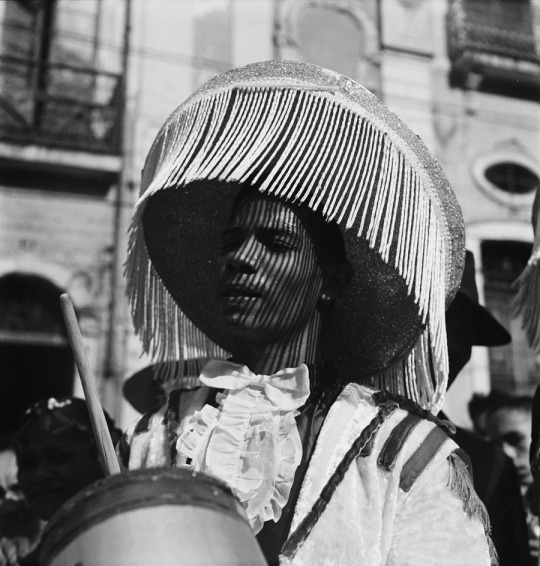
Pierre Verger // Embaixada Mexica na Carnaval Salvador Brasil // 1951 "Pierre Edouard Leopold Verger, alias Fatumbi or Fátúmbí (4 November 1902, in Paris – 11 February 1996, in Salvador, Brazil) was a photographer, self-taught ethnographer, and babalawo (Yoruba priest of Ifà) who devoted most of his life to the study of the African diaspora — the slave trade, the African-based religions of the new world, and the resulting cultural and economical flows from and to Africa"
72 notes
·
View notes
Photo
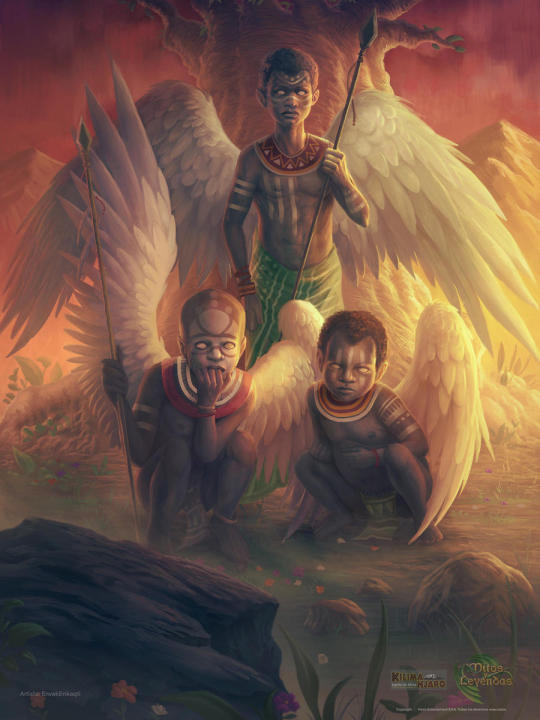
The Abiku [African/Yoruba/Nigerian mythology]
The Yoruba people are an ethnic group who live in what is now Nigeria. In their religion, Abiku are vile, evil spirits with little or no redeeming qualities. Mostly nocturnal, these beings come together at dusk and dawn and congregate in high treetops, darkened corners of homes, and similar spots. Their goal is to search human settlements to find pregnant women. When a suitable target is located, an Abiku will attempt to enter the body of the woman, which they can do because these spirits are incorporeal beings. Once inside the womb, the evil spirit will completely destroy the unborn baby. It will then shape a new body for itself, in the form of a human foetus, which it inhabits.
Eventually, the baby is born just like a normal child. But it is not a human being. The Abiku, now in the form of a newborn infant, will transform into an adult when its mother is sleeping and wander around the town at night. It does this so it can still attend the nocturnal gatherings of the Abiku spirits.
The goal of the Abiku is to collect the tears of a mother, but I am uncertain whether these tears are their nourishment or if they are used as a form of currency among the spirits. Whatever the reason, they will try dirty tricks to obtain these tears. Abiku are known to kill their own body (this does not kill the spirit itself), making the mother think that her child died. The spirit will then wait until the woman gets pregnant again and replace another child, often repeating this process many times in a row with the same woman. And every time the mother weeps for her deceased children, the Abiku collects the tears. However, there are stories of Abiku who remained in their human form for years or even over a decade before dying, in rare cases even reaching adulthood and having their own children.
When a couple suspects they’re being targeted by an Abiku, they sometimes hire a Babalawo, which is a kind of medicine-man or priest in the Yoruba religion. He can attempt to convince the spirit to stop, but there is no solution or cure that can drive away an Abiku.
Finally – and this is just speculation on my part – I belief the myth of the Abiku might have originated as a way to explain why a woman had several miscarriages in a row. Alternatively, given that it was possible for an Abiku to remain in its human form for years, this might have been a way to explain people with physical birth defects or severe mental illnesses. People might have thought that they were eldritch spirits who replaced the original human baby, like the fairy changelings of British folktales.
Source:
Thomas, D. and Alanamu, T., 2018, African religions: beliefs and practises throughout history, ABC-CLIO, 284 pp.
(image source: EnvakEnkaqti)
86 notes
·
View notes